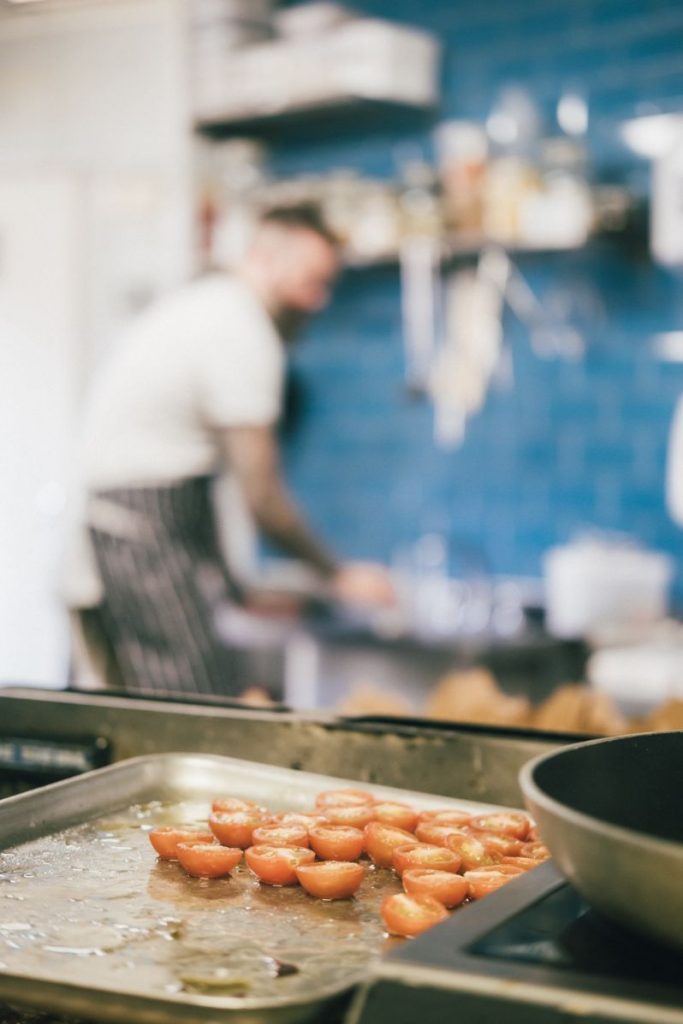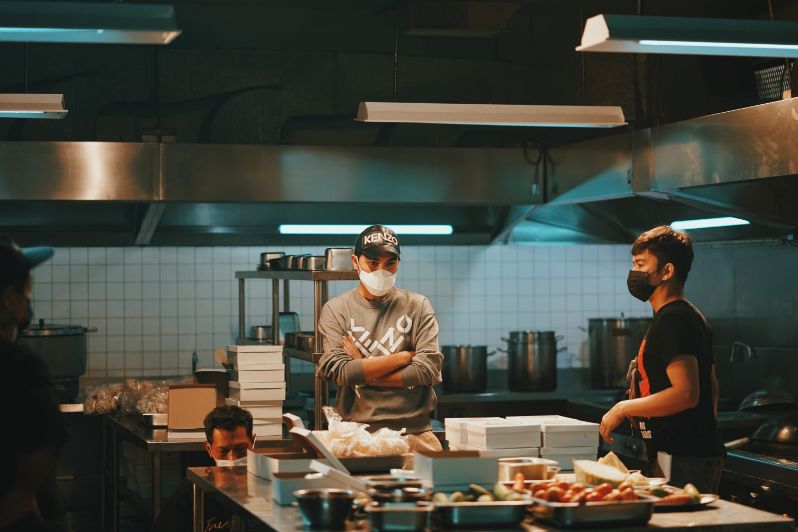It is essential to keep a commercial kitchen floor clean, not just to make it look nice, but to keep your kitchen staff safe as well. It is dangerous to walk on spills and other dirt on the floor, not to mention that dirty floors wear down over time. Also, just a side note, if you are looking for a kitchen epoxy flooring service around GTA Ontario, you can talk to us!
Factors affecting your Commercial Kitchen’s cleanliness
- Clogging of Drains
Water drains are one of the most convenient features of a kitchen floor, allowing cleaning water to drain from the top without forming puddles. In addition to allowing floors to dry faster, drains allow cleaning to be more efficient by requiring less time to dry the floor after mowing.
Nevertheless, clogged drains can cause problems when water sits on the tile and settles into the surface. This can lead to mould growth, both on and between the tiles. Bacterial growth can lead to disheartening ingredients when the problem persists. It is therefore imperative to ensure kitchen drains are unclogged and free from obstructions.
- Floor tiling
Traditionally, quarry tile is used as a flooring material in kitchens. Because these tiles are porous, grease can penetrate into the microscopic holes and cause chronic slipperiness. If these are not cleaned thoroughly, this can lead to them getting slippery as well as worn out over time.
Employees are at risk of slipping and falling if the condition worsens. Slips falls, and injuries from poorly maintained floors can happen, not to mention stalled orders and unhappy diners when trays fall over or are spilled. Therefore, an anti-slip sealant should be applied to kitchen floors, not only to boost cleanliness but also to make the kitchen environment safer for employees.
- Cleaning Order
When cleaning the kitchen of a restaurant, an employee may neglect to clean the floor before the food-processing equipment. Even though it might seem intuitive to clean the kitchen floor last, particulate matter from the floor can actually go airborne and land in places like food supplies and cooking equipment.
Cleaning kitchen floors at the end of each day before any other kind of cleaning will ensure that everything is more hygienic. It is less likely that airborne germs will be spread to open food cans and spice jars.
- Keeping the Mops clean
The use of dirty mops on kitchen floors is another mistake that often occurs in kitchen environments. During a mopping, diluted cleaning fluid will often get dirty when the same bucket is used. As soon as the mop is used for more than a few minutes, the person using it is no longer cleaning the floor, but instead is spreading dirt about, which subsequently evaporates and spreads germs.
It is therefore imperative to change the mop water as soon as the water turns dark. Once the mop water is clear after the last round of mopping has been done and wrung, it is generally a good indication that the floor has been cleaned effectively.
Additionally, when the same mop is used in the kitchen as well as in all other areas of an eating establishment (bathroom/Garbage area) mopping can become especially problematic. It is imperative that kitchen mops are specifically designated for use in the food preparation areas of a dining establishment in order to ensure hygiene and effectiveness.

How to keep your Commercial Kitchen clean
Now that we discussed what makes your kitchen floor dirty and why it is so important to keep it clean, let’s talk about how to actually go about doing it.
1. Have a Cleaning Routine
A proper routine can make or break your Commercial Floor cleaning process. This is why a planned and effective cleaning routine is essential to set up your kitchen for success. It is important that the cleaning staff is well trained on the procedures and that written copies of the procedures are available.
Having established a cleaning schedule, cleaning duties can be assigned to specific individuals. Keeping written records of the completion of tasks is an important part of ensuring accountability. To ensure they are not missed, it is especially important to schedule and track tasks that do not need to be done every day.
2. Prioritize safety with Warning signs
When cleaning a commercial kitchen floor, close off the area or post warning signs. If warning signs are not placed, someone could walk in midway through the cleaning process, and track dirt or fall victim to a slippery floor.
3. Sweep the floor first
We often overlook sweeping when doing kitchen floor cleaning. But it is a very important step. The mop won’t simply move dirt around on the kitchen floor if you sweep it first. The best commercial kitchen floor cleaning products work best if they have less dirt to work with. Keeping the floor drains clear by sweeping will prevent dirt and debris from clogging them.
4. Ensure the floor drains are clear
When you begin sweeping and rinsing the floor, the worst realization is when you discover halfway through that the water doesn’t drain properly.
Water and leftover cleaning solutions should drain efficiently and quickly from floor drains. They should be free of obstructions. This will keep the floor as clean as possible and eliminate the unnecessary buildup of dirt where the water may drain.
5. Before other kitchen equipment, try cleaning the floor
Most people think that cleaning the floor comes after cleaning the cooking equipment and higher-up surfaces, but it is actually the opposite that applies. A commercial kitchen must maintain a high standard of cleanliness at all times, which cannot be achieved if the cleaning is done in the wrong order.
If you clean the floors of your commercial kitchen first, dust and dirt will not become airborne and land on equipment that processes food. Even if they do, you’ll be cleaning the equipment afterward anyway ensuring that everything is perfectly clean, as opposed to cleaning the floor later which will leave debris on your equipment.
6. Proper usage of cleaning products
It is not a good idea to mop and rinse the floor immediately after cleaning the floor with your commercial kitchen floor cleaner. To really attack the dirt and grease on your floor, let the product sit for a few minutes.
7. Properly drying the floor
When you have used a floor cleaning product, ensure that the dirt and cleaning product are thoroughly rinsed away. The floor may become slippery if dirt and/or residue are not removed.
Remove the warning signs and open up the area again only after the floor has had time to fully dry. Be sure you wait the full time needed to dry all areas, or you risk injuring your cleaning staff or other customers if a lingering wet spot causes them to slip.
8. Keeping cleaning equipment clean and stored in their proper environment
You cannot keep your kitchen floor clean if the cleaning equipment itself is not clean in the first place. Cleaning supplies like mops, brooms, buckets, and other tools should be cleaned regularly in order to prevent dirt from simply being thrown around on surfaces. Additionally, this prevents cross-contamination between bacteria and food pathogens.
Depending on the type of cleaning equipment, you should store it on hooks or on a cart off of the ground. By doing so, not only will they remain as clean as possible when not in use, but they will also prevent unnecessary wear and tear, helping them last longer.
Need your commercial flooring to be updated in Ontario? Simply give us a call and let’s talk!

